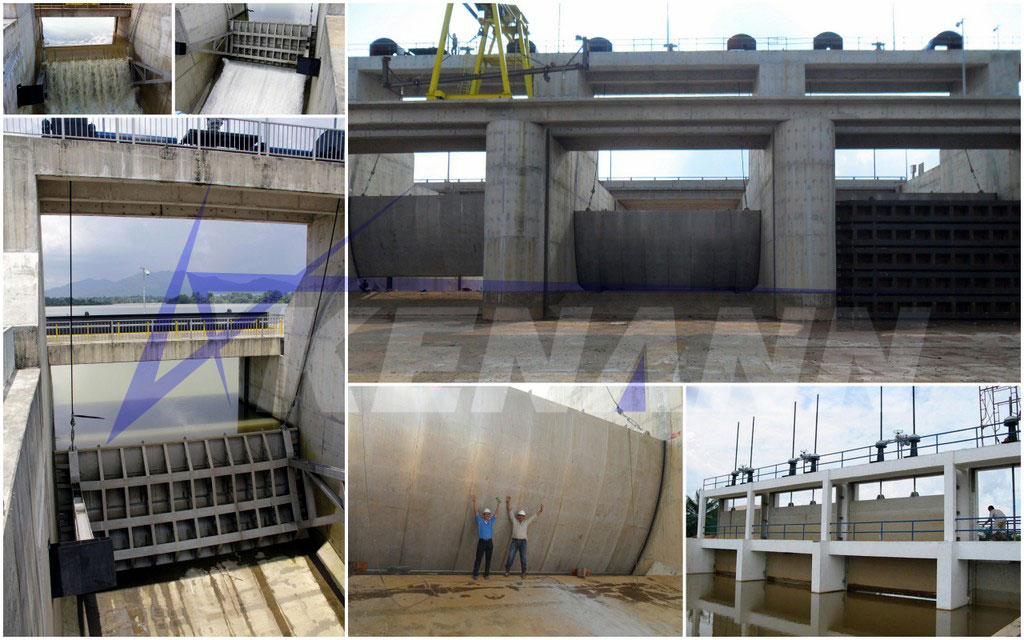
KENANN RIVER GATES
Kenann Engineering specialises in building hydraulic gates for barrage schemes, pump houses and dams. A portion of our work also relates to flood defense in some form. We design all types of gates for this purpose including vertical lift penstock (please refer to Kenann Penstock Catalogue), miter gate, fish belly gate, tilting gate and radial gate.
Kenann technical design team is headed by an experienced design consultant who has over 40 years of involvement in this industry. The founder of Kenann Engineering has over 20 years of hands-on experience in the design, fabrication, installation, testing and commissioning of river gates.
KENANN DESIGN FEATURES
Kenann Engineering fabricates gates for agriculture, intake works and flood mitigation. All gates are manufactured using stainless steel as the main components as this material is able to withstand corrosion and have durability that will last for years. We have fabricated up to a width of 12,000 mm. We design, fabricate, install, test and commission the following types of flood gates:
- Radial Gate. (Click for more info)
- Roller gate. (Click for more info)
- Miter gate. (Click for more info)
- Tilting gate. (Click for more info)
- Fish Belly Gate. (Click for more info)
- Stoplogs (Click for more info)
All Kenann River Gates is designed in accordance with the following conditions
- Able to withstand against predictable load safely and minimize secondary stresses.
- Sufficient water tightness by using various shapes of elastic materials such as rubber so that under high pressure, the rubber is pressed against a seal plate.
- Equipped with a hoisting device with sufficient capability to ensure reliable operation and easy to handle.
- High durability.
- No harmful vibrations during operation.
- Easy maintenance.
- The type, shape, size and number of gates shall be determined in accordance with the installation location, purpose and conditions of use.
- Available in stainless steel, mild steel, duplex and super duplex steel.
- Design specifications and guidelines comply with DIN19704 and Japanese Standard (JIS) or equivalent.